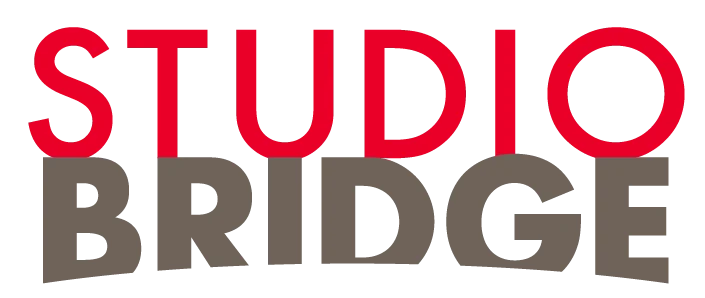So I was thinking about my crypto setup the other day, and man, the whole self-custody thing feels like walking a tightrope sometimes. Seriously? Managing your own keys, juggling dapp browsers, and keeping everything secure—it’s a lot. But then I stumbled back on the coinbase wallet and, well, things started to click differently.
Here’s the thing: self-custody wallets promise you control, right? You hold your private keys, no middlemen, no banks. But in practice, the user experience can be a mess. Clunky interfaces, confusing security prompts, limited dapp support… It’s like, yeah, I want control, but I also don’t want to lose my mind trying to use it.
At first glance, I thought all wallets were more or less the same—just different skins on the same tech. But nah, the nuances really matter. For example, the way a wallet integrates a dapp browser can make or break your day. Some browsers barely load anything, others get stuck on onboarding screens. The coinbase wallet nails this part pretty well, which honestly surprised me. It’s not perfect, but it’s smooth enough to keep up with the latest DeFi platforms without feeling like you’re hacking the matrix.
Hmm… I guess my gut reaction was skepticism, but the more I poked around, the more I appreciated the balance here. It’s like they’ve thought about the everyday user, not just the hardcore crypto nerds. And that’s rare.
Whoa! Let me break down why this wallet stands out.
Balancing Control and Usability
Look, self-custody is a double-edged sword. On one hand, you own your assets outright—no custodial risk, no shady intermediaries. But on the other, you’re solely responsible for your keys and backups. Lose them, and poof, your crypto evaporates. That tension is very very real.
What bugs me about some wallets is they either swing too far towards security paranoia—making you jump through hoops like a circus performer—or they sacrifice security for ease of use. The coinbase wallet seems to strike a middle ground. It provides advanced features like biometric authentication and seed phrase backups, but also keeps the interface intuitive enough that you don’t need a cryptography degree.
Initially, I thought the dapp browser was just a gimmick—a built-in mini browser that probably wouldn’t support the full range of DeFi apps. Actually, wait—let me rephrase that… The browser is more than a gimmick. It’s a gateway. It lets you interact with decentralized exchanges, NFT marketplaces, and lending protocols all within the same app. No need to switch devices or copy-paste addresses, which cuts down on errors and phishing risks.
On one hand, this integration is convenient, though actually, it also raises the stakes for security. If the browser gets compromised, your wallet might be at risk. But from what I’ve seen, Coinbase Wallet has solid sandboxing and permissions management, which helps reduce that attack surface.
Something felt off about how some other wallets handled token swaps. They’d either charge crazy fees or present confusing interfaces that left me wondering if I’d just lost a chunk of my balance. In contrast, the coinbase wallet offers a straightforward swap feature that pulls liquidity from multiple sources, aiming for the best rates. It’s not flawless, but it’s a big step towards making DeFi accessible to the average Joe or Jane.
Security Without the Headaches
Okay, so check this out—security is often the elephant in the room when talking about self-custody wallets. Most people freak out about seed phrases, and honestly, I get it. Writing down 12 or 24 random words and guarding them like Fort Knox is daunting. But if you don’t, you risk losing everything.
The coinbase wallet provides clear, step-by-step guidance during setup, nudging you to back up your seed phrase properly. It even offers options for biometric locks and PIN codes that add layers of protection without making you jump through endless hoops. It’s like having a security system that doesn’t treat you like a hacker every time you open the app.
That said, I’ll be honest—the user still has to do the heavy lifting when it comes to backups and staying vigilant against phishing. No wallet can do that for you. But the design choices here lower the barrier for those who are new-ish to crypto but want to be their own bank.
Hmm… I’m not 100% sure if the wallet’s security model is bulletproof, but it definitely aligns with best practices and industry standards, which I appreciate.
Wow! And for those who like to tinker, the wallet supports hardware wallet integration. That’s a nice bonus if you want to beef up security even more.
Why the Dapp Browser Matters More Than You Think
So, you might wonder why I’m really digging the dapp browser aspect. Here’s the deal: in Web3, the browser is your main bridge to decentralized services. If it’s slow, buggy, or limited, your whole experience tanks.
Many wallets outsource this to external browsers or rely on clunky extensions, which means less seamless navigation and more risk of mistakes. The coinbase wallet embeds the dapp browser right into the app, so you’re not bouncing around multiple apps or tabs. This matters because it reduces friction and the chance of phishing attempts.
One little quirk though—it doesn’t support every single dapp out there, especially some super new or niche ones. But honestly, it covers all the major ones pretty well. And they’re updating regularly, so that gap is closing.
Here’s what bugs me about some competitors: they act like “all-in-one” solutions but end up being jack-of-all-trades-master-of-none. Coinbase Wallet keeps it focused—solid core features, dependable security, and a smooth dapp browser experience. That kind of focus is refreshing.
Oh, and by the way… if you’re into NFTs, the wallet also lets you store and display your collectibles. It’s not just about tokens and swaps.

Final Thoughts — Is It Right for You?
Look, I’m biased towards wallets that balance usability with real security because I’ve seen too many folks get burned by losing keys or falling for phishing scams. The coinbase wallet doesn’t solve all problems, no wallet does, but it’s a solid choice if you want to dip your toes into self-custody without feeling overwhelmed.
Sure, it’s not perfect—there are trade-offs, and you still have to be careful. But when you compare it to the alternatives, it stands out for its polish and thoughtful design. Honestly, if you’re in the US and looking for a reliable self-custody wallet that supports a full-featured dapp browser, this wallet deserves serious consideration.
My instinct says: start with this, get comfortable, then build out your setup from there. Self-custody is a journey, and having a wallet that feels intuitive can make all the difference.


No Comments